![]()
Feature Documentary Film "DASHI & SHOYU: Essence of Japan"
Story
For centuries, the Japanese have learned to draw from the treasures of nature. With limited space to grow food for all, Japanese cuisine distilled, instead, the very best from its oceans, the forests and mountains that cover most of the archipelago’s landmass. To truly be nourished, they believe, you must open all your senses, become aware of the world around you and its transformative properties. And in paying thoughtful attention to the delicate and the rare, they discovered astonishing worlds beneath the visible. To penetrate the secrets of this invisible world we must take a microscopic journey to the genesis of the pure and restrained art of Japan’s cuisine whose twin pillars are: a delicate stock named ‘Dashi’; and the golden sauce they call ‘Shoyu’. Without them, the delicate balance of textures and harmonisation of flavours which make up the genius of Japanese cuisine, would not be achieved…
Part 1: Dashi (Soup Stock)
‘Dashi’ is the bedrock of Japanese cuisine. Deceptively simple, master chefs down the centuries jealously guarded its secrets and blended their aromas at night. In the philosophy of Japanese cuisine, Dashi is not fabricated or concocted but “drawn out” from the very stuff of nature. And the essential ingredients from which it is drawn are gathered from the waters that surround Japan’s islands.
In the northern seas, Konbu, a species of seaweed, grows by absorbing the sea’s nutrients through the entire surface of the plant. While in the southern seas, great shoals of Bonito arrive once a year on their annual migration north. But Dashi is also nurtured in the forest, where forest dwellers have for centuries developed the delicate craft of cultivating choice shiitake mushrooms from the humid trees.
The development of dashi came about as a result of a historical event that triggered a “food revolution”. Buddhism arrived in Japan about one thousand five hundred years ago. Its philosophy forbids the destruction of life. After embracing Buddhism, the Imperial Court issued edicts prohibiting the production and consumption of meat, which spread from nobles and samurai eventually to the population at large. This was strictly enforced. Famished, the Japanese quickly sought other sources of ‘umami’ taste. And they found it in Dashi made with Konbu kelp, shiitake mushrooms and dried bonito.
Dashi is a distillation of the natural resources of Japan, the essence of its very nature.
Part 2: Shoyu (Soy Sauce)
The Japanese discovered that a humble mould spore could transform soya beans into ‘Shoyu’, the soy sauce that is a pillar of Japanese cuisine. Sprinkle it on rice and the rice changes into sake and a sweet sake extract called Mirin. This mould is a tiny organism called ‘Aspergillus oryzae’ and mysteriously, it exists only in Japan.
To tell this story, we travelled to the imperial city of Kyoto where the ancient craft of brewing Shoyu is preserved. It’s a delicate process that must begin in spring and requires one whole year to mature the soy sauce. The Shoyu brewer knows well how climatic conditions can impact the result of his work. It is all a question of balance and harmony…
100min / Japan & France / HD
Co-productions between ARTE / NHK / PDJ / ASIA
In CINEMAS
| Ghent, Belgium | 26 Mar.(Sun.) 2017 |
Studio Skoop
Belgium premiere! Film festival 2017 Japan Square.
Venue: Studio Skoop |
| San Francisco, U.S.A. | 30 Jul.(Sat.) 2016 |
NEW PEOPLE Cinema
English dubbed version will be screened.
Japan Film Festival of San Francisco
Venue: 1746 Post Street, San Francisco, CA 94115 | MAP |
| Prague, Czech Republic |
5 Feb.(Fri.) 2016 |
Kino Lucerna
From 18:00 It will be screened with English narration, Czech and Japanese subtitles.
EIGA-SAI 2016 Official Website
Venue: Kino Lucerna, Vodičkova 36, Praha 1, 110 00 Google map Tel. 736 431 503 / 224 216 972. |
| Kyoto | 14 Sep.(Mon.)
21 Sep.(Mon.) 2015 |
Kyoto Cinema
Venue: Kyoto Cinema. COCON Karasuma 3F, Karasuma-Street (the south-west side of Shijo), Shimogyo-ku, Kyoto-shi, Kyoto Google map Tel:075-353-4723
Special screening with English narration and Japanese subtitles will be on 14 at 15:00 and 21 Sep. at 10:20.
Regular screenings in Japanese, please check this site. |
| Shibuya, Tokyo | 10 Mar.(Tue.) 17 Mar.(Tue.) 24 Mar.(Tue.) 31 Mar.(Tue) 2015 |
UPLINK Factory Venue:Totsune Bldg 1F, 3 Tel: (03)6825-5502
Special screening with English narration and Japanese subtitles will be on every Tuesdaythis month. Next is12:50 on 31 Mar. (Tue.). |
| Yokohama | 7 Mar. 2015 | Cinema Jack and Betty Venue: 51-3, Wakaba-cho 3-chome, Naka-ku, Yokohama, Kanagawa Tel: (045)243-9800
Special screening with English narration and Japanese subtitles will be on 7 Mar. at 14:55.
Regular screenings in Japanese, please check this site. |
The people who live the wisdom of their ancestors.
|
|
 |
Yuri Fujimoto
Fisher woman in Shiretoko, Hokkaido, 90 years old. This area have been registered as a UNESCO Natural World Heritage site. There is a hut on the beach located near where there's an abundance of naturally occurring konbu kelp. There's no electricity or tap water. Yuri Fujimoto lives here alone, with her dog and daily visits by wild bears, gathering wild konbu. |
 |
Toshikatsu Miura and his family.
Fisherman in Shiretoko, Hokkaido. The Miura family also live in a small hut gathering wild konbu. Everyone, even the elementary school children, lend a helping hand in the harvest. |
 |
Shusaku Imakiire
Master maker of dried bonito (katsuobushi ), Makurazaki, Kagoshima Pref. |
 |
Minshu Tsubokawa
Master Chef in Zen Temple, Soji-ji, Kanagawa Pref. |
 |
Kuniko Shiiba
Kuniko Shiiba is the sole remaining farmer in Japan who carries out slash-and-burn farming to grow shiitake mushrooms. |
 |
Hisateru Sawai
Brewer of Shoyu (Soy Sauce) who carries out traditional brewing in Kyoto. |
 |
Takatoshi Ohno
Master brewer of Sake, who uses ancient brewing methods in Chiba Pref. |
 |
Akihiko Sukeno
Traditional mold seed producer, Kyoto |
 |
Taro Fukuchi
6th month old boy. |
 |
Hiroyuki Kato
Famous Master Chef in Gion, Kyoto. Dignitaries and celebrities know this chef. Steve Jobs often visited his restaurant when in Japan. |
Scientific Supervisor

|
Toru Fushiki
Professor of the Division of Food Science and Biochemistry at the Graduate School of Agriculture, Kyoto University |
 |
Katsuhiko Kitamoto
Professor of microbiology, Department of Biotechnology, The University of Tokyo. |
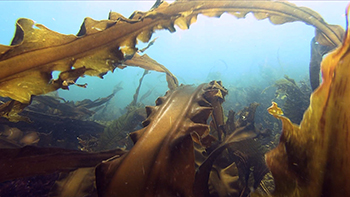
Witness the mysterious making of Kombu, dried bonito and shiitake mushroom.
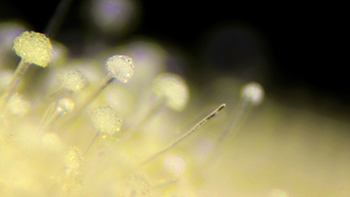
Mold blossoms used to make Sake and Soy sauce.
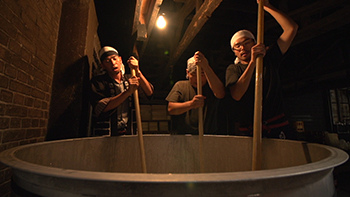
The craftsmen sing to the tiny organisms so that the fungi will be happy in their work and make Sake cheerfully.
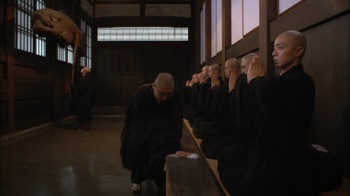
Japanese cuisine was developed
on the foundations of Zen philosophy.
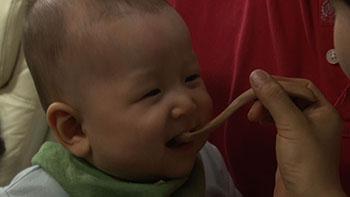
The traditional first meal with Dashi served on the one hundredth day of life.
Staff
Director:Shohei Shibata Camera:Yasuo Kasugai Music:Dan Parry Assistant Director:Itaru Matsui Executive Producers: Yoshimi Oganeku (ASIA Documentary Productios) Nozomu Makino (NHK) Jun Ito (NHK) Catherine Alvaresse (ARTE France) Luc Martin-Gouset (Point du Jour) |
【Director Shohei Shibata】
Shohei Shibata, graduated from University of Tokyo and joined NHK in 1988. After an initial three-year assignment as a TV director at the NHK Okinawa Station, he was transferred to the News Department at the NHK Broadcasting Center in Tokyo.
From 1992 to 1995, Shibata worked for the Center for Ethnological Visual Documentation. He then became an independent TV director.
In 1997, Shibata established ASIA Documentary Productions Company in Tokyo, serving as its president and as a film & TV producer and director.


